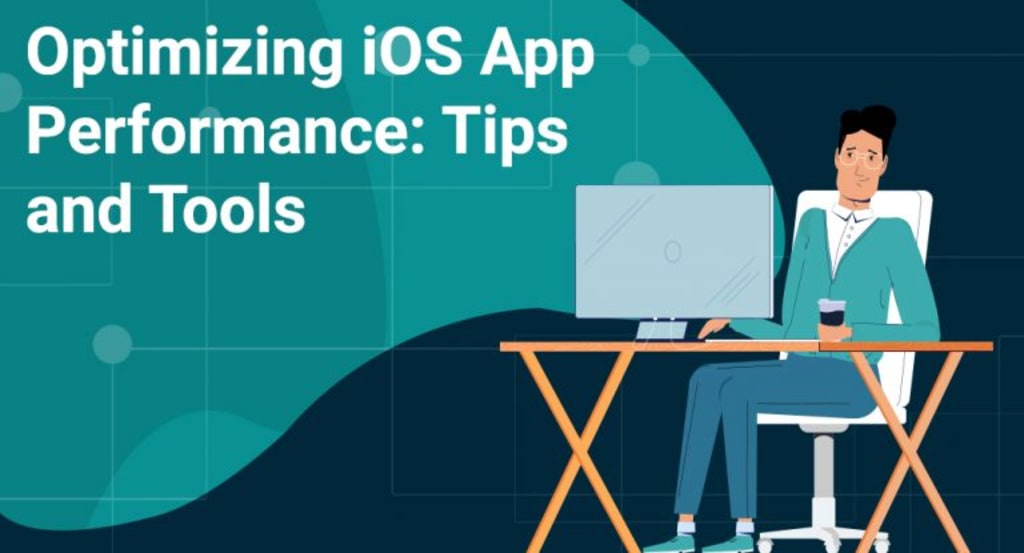Optimizing iOS App Performance: Tips and Tools
iOS App Development

Optimizing the performance of an iOS app is a critical aspect of delivering a seamless and enjoyable user experience. In a world where users have high expectations for app responsiveness and speed, sluggish or resource-intensive applications can quickly lead to user frustration and abandonment. To ensure your iOS app stands out in the competitive app market, you need to employ a combination of best practices, tools, and strategies for performance optimization.
In this article, we will explore a range of essential tips and tools to help you fine-tune your iOS app’s performance. Whether you’re a seasoned iOS developer or just starting your app development journey, these insights will empower you to identify bottlenecks, reduce resource consumption, and create an app that runs smoothly on a variety of iOS devices. From profiling and debugging to efficient coding practices and UI optimization, we’ll cover all aspects of iOS app performance improvement. Let’s dive in and learn how to make your iOS app faster, more efficient, and more enjoyable for your users.
Tips for Optimizing iOS App Performance
Reduce the App Loading Time
To reduce app loading times and optimize iOS app performance, focus on asynchronous initialization, code optimization, and resource preloading. Asynchronously load essential components, such as data and resources, to ensure a responsive user experience during app startup. Identify and optimize CPU-intensive operations that may be causing delays, and consider preloading critical assets to minimize load times further.
Minimize CPU Usage
Minimizing CPU usage is a critical aspect of optimizing iOS app performance. To achieve this, focus on optimizing your codebase by identifying and refactoring CPU-intensive operations. Implement efficient algorithms and data structures, and offload resource-intensive tasks to background threads using technologies like Grand Central Dispatch (GCD) or Operation Queues.
Optimize Memory Usage
Optimizing memory usage is paramount for enhancing iOS app performance. To achieve this, conduct thorough memory profiling using tools like Instruments to identify and rectify memory leaks and inefficient memory allocation. Employ Automatic Reference Counting (ARC) and efficient object management practices to ensure memory is released promptly.
Use Performance Testing Tools
Employ XCTest and XCUITest for automated performance testing. Measure and analyze app launch times, UI interactions, and other critical metrics to identify regressions.
Reduce Network Requests
By minimizing unnecessary data transfers and optimizing the way your app communicates with servers, you can significantly enhance user experience. Implement strategies like request batching, effective caching mechanisms, and background fetch to reduce network activity.
Database Efficiency
By optimizing database queries through indexing and employing efficient data retrieval techniques, you can drastically enhance the responsiveness of your app. A well-optimized database ensures that your app delivers fast data access and manipulation, providing users with a seamless and efficient experience while reducing resource consumption.
Update Third-Party Libraries
Keep third-party libraries up to date, as newer versions often include performance improvements and bug fixes.
Tools for Optimizing iOS App Performance
Xcode Instruments
Xcode’s Instruments offers a suite of performance analysis tools, including Time Profiler, Allocations, and Network Monitor, to identify and diagnose performance issues.
XCTest and XCUITest
These tools allow you to write and automate performance tests to measure critical metrics such as app launch time and UI responsiveness.
LLDB Debugger
The LLDB debugger in Xcode enables you to debug and analyze code during runtime, helping identify and fix performance-related issues.
Network Link Conditioner
This tool lets you simulate various network conditions on the iOS Simulator, helping test your app’s behavior under different network speeds and conditions.
Core Animation Debugging
Use Xcode’s Core Animation instruments to diagnose and optimize animation-related issues.
Static Code Analysis
Utilize tools like SwiftLint and Clang Static Analyzer to find code quality issues and potential performance problems.
Third-Party Libraries
Consider using third-party libraries like Alamofire for network requests, SDWebImage for image caching, and other libraries optimized for performance.
UI Testing Tools
UI testing frameworks like EarlGrey or Appium can help automate UI testing and identify performance regressions.
Device and Simulator Testing
Test your app on a variety of iOS devices and simulators to ensure performance across different hardware configurations.
Crash and Analytics Tools
Implement crash reporting and analytics tools like Firebase Crashlytics or Flurry to monitor app stability and performance in real-world scenarios.
Conclusion
Remember that performance optimization is an ongoing process. Regularly monitor your app’s performance, address issues as they arise, and stay informed about the latest iOS updates and best practices to ensure a great user experience on iOS devices.
About the Creator
Matthew Brain
Matthew Brain, an experienced content writer, enjoys sharing his thoughts on various online delivery firms, eCommerce, on-demand business models, and so on.
https://www.swayaminfotech.com/taxi-booking-app-like-uber-clone-app/






Comments (1)
Intresting post